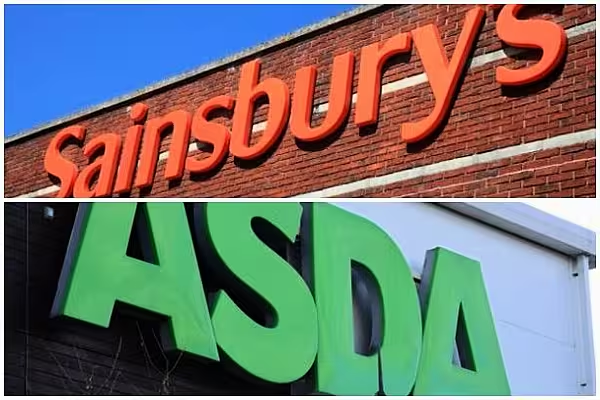Following the announcement by the UK's Competition and Markets Authority (CMA) that it has now commenced a formal investigation into Sainsbury's proposed £7.3 billion takeover of Asda, a leading property consultant has suggested that Aldi and Lidl may end up being among the beneficiaries of some of the knock-on effects of the deal.
As Richard Curry of commercial property consultancy Rapleys explained, the CMA process will likely necessitate the disposal of some stores, and the discounters could be well placed to pounce on this opportunity.
“Food retailers, across the board, have been trying for some time to right-size their portfolios and cut down on surplus space," Curry said.
"However, the key issue is that there aren’t that many players in the market who could realistically pick up Sainsbury’s or Asda stores in any disposal enforced by the CMA. The irony is that the most likely buyers are just those brands – Aldi and Lidl – who Sainsbury’s are looking to defend against with this move."
Curry noted that as a result of its improved financial performance, Morrisons could also be a potential beneficiary, but it would likely only be interested in "the right stores in the right locations" and are also "highly unlikely to consider taking on any stores beyond what would be regarded as the optimum size for food retail: around the 40,000 – 50,000 sq ft mark".
Examining The Merger
Since the UK grocery sector's biggest deal in 15 years was announced in April, the CMA has been gathering information needed to start a formal probe.
"It’s vital to find out if the millions of people who shop in supermarkets could lose out as a result of this deal," said Andrea Coscelli, CMA chief executive. "We...will not allow it to go ahead unless any concerns we find are fully dealt with."
The CMA, which is independent of government, will now begin the first phase of a detailed assessment into how the deal could affect competition for British shoppers in the £190 billion food and grocery market.
"The CMA’s investigation will consider whether the deal could lead to less choice, and therefore higher prices or worse quality services, across the range of products sold by both businesses," it said, noting that as well as being major retailers of groceries, both in-store and online, Sainsbury’s and Asda also compete in fuel, electricals, toys and clothing.
The regulator will also examine whether Sainsbury's-Asda could use its increased buyer power to squeeze suppliers and whether this could have knock-on effects for shoppers - for example, through suppliers being less able to innovate or having to charge higher prices to competitors of the merged group.
The combined group is seeking £350 million of savings when buying from suppliers.
Fast-Track Process
The CMA invited views by August 31 on how the merger could affect competition.
Sainsbury’s and Asda have asked the regulator to move quickly to an in-depth Phase 2 inquiry through its "fast-track" process. The CMA said it expected to accept this request. Phase 2 typically lasts 24 weeks, with the possibility of an eight week extension.
Competition lawyers have said Sainsbury's and Asda face an uphill battle to get the deal passed without having to sell off so many stores that its rationale is removed.
Analysts at UBS have a base case scenario of a modest 28-54 store disposals to satisfy the regulator. However, that number rises to 132-161 stores if the CMA excludes discounters such as Aldi and Lidl as competitors.
News by Reuters, edited by ESM. Additional reporting by Stephen Wynne-Jones. Click subscribe to sign up to ESM: European Supermarket Magazine.














